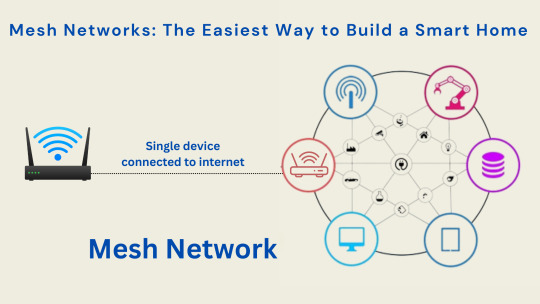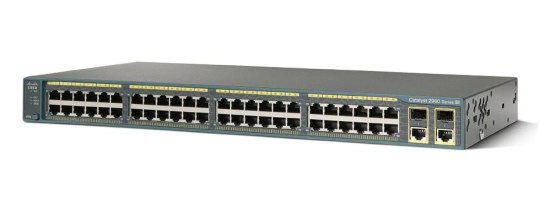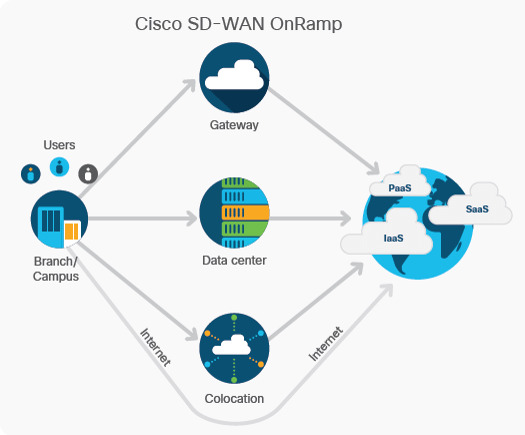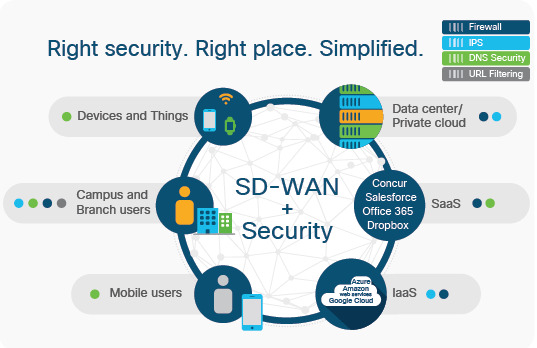#EnterpriseNetworking
Explore tagged Tumblr posts
Text

L2+ MANAGED POE SWITCH LM-2404FMGP-L2
Power your network with the L2+ Managed PoE Switch LM-2404FMGP-L2. Designed for high performance and advanced control, it features 24 PoE ports, robust security, and seamless Layer 2+ management—perfect for surveillance, VoIP, and enterprise connectivity. Smart, scalable, and efficient for modern network demands.
For more information, Visit:https://newtrend.ae/ Live chat: +971 507542792
#ManagedSwitch#PoESwitch#NetworkSolutions#EnterpriseNetworking#SmartConnectivity#VoIPReady#SurveillanceSupport#Layer2Plus#ITInfrastructure#NewtrendNetworks
0 notes
Text
#Wireless Broadband Alliance#WiFi7#EnterpriseNetworking#CommScope#Intel#NextGenConnectivity#electronicsnews#technologynews
0 notes
Text

#MeshNetworking#WiFi7#RouterArchitects#SmartHomeWiFi#EnterpriseNetworking#WirelessSecurity#WiFi6E#IoTConnectivity#FasterWiFi#FutureOfNetworking#WirelessMesh#NetworkingExperts#RouterTips#WiFiUpgrade#AIInNetworking
0 notes
Text

Explore essential components in SD-WAN solutions, designed to optimize network performance for distributed environments. https://www.dclessons.com/sd-wan-solution-overview-components
#SDWAN#NetworkOptimization#DistributedNetworks#CloudNetworking#WANPerformance#NetworkSolutions#EnterpriseNetworking#TechInnovation
0 notes
Link
#SDWAN#Netzwerke#NetworkSolutions#CloudNetworking#SecureNetworks#WANOptimization#DigitalTransformation#EnterpriseNetworking#Connectivity#ITInfrastructure#VirtualNetworks#BandwidthManagement#NetworkSecurity#BusinessNetworking#TechInnovation
0 notes
Text

Software-Defined Wide Area Network (SD-WAN) Market size by value at USD 8.74 billion in 2023. During the forecast period between 2024 and 2030, BlueWeave expects Global Software-Defined Wide Area Network (SD-WAN) Market size to boom at a robust CAGR of 14.9% reaching a value of USD 23.11 billion by 2030. The Software-Defined Wide Area Network (SD-WAN) Market across the regions is propelled by an increasing need for simplified WAN management, cost efficiency, and enhanced bandwidth utilization in cloud environments. SD-WAN's ability to improve application performance while maintaining security, alongside rising cloud service adoption, boosts its demand. Its superior traffic optimization compared to traditional WAN methods, like MPLS, further fuels growth. Despite deployment challenges, AI-driven IT operations (AIOps) are expected to ease SD-WAN adoption, supporting market expansion.
Sample Request @ https://www.blueweaveconsulting.com/report/software-defined-wide-area-network-market/report-sample
North America Dominates Global SD-WAN Market
North America, particularly the United States, maintains a dominant position in Global Software-Defined Wide Area Network (SD-WAN) Market. Driven by a strong emphasis on innovations, companies in the region are leveraging SD-WAN to accelerate service and application deployment, modernize network management, and streamline the rollout of cloud-based solutions. The agility empowers businesses to adapt swiftly to evolving market conditions and customer demands. Beyond competitive advantages, SD-WAN offers significant operational benefits, such as enhanced network performance and reduced costs. The increasing focus on agility and productivity, combined with advanced features provided by companies like Cisco, positions the United States as a leader in SD-WAN adoption and innovations.
#Blueweave#Consulting#marketreserch#marketforecast#NetworkingTechnology#DigitalTransformation#CloudComputing#Cybersecurity#ITInfrastructure#MarketResearch#TechInnovation#WideAreaNetworking#EnterpriseNetworking
0 notes
Text

The Cisco SG550XG-24T-K9-NA is a high-performance 24-port Gigabit Ethernet switch designed for growing businesses. With advanced Layer 3 features, 10G connectivity, and robust security, it ensures reliable and scalable network performance. Ideal for data-intensive environments, it provides seamless integration, easy management, and enhanced productivity. Upgrade your network with the SG550XG-24T-K9-NA for unparalleled efficiency and future-proofing.
0 notes
Text
Ubiquiti ES-48-500W EdgeSwitch
📌 Ubiquiti ES-48-500W EdgeSwitch 48-Port Gigabit 500W
The Ubiquiti ES-48-500W EdgeSwitch provides 48 Gigabit ports, supports PoE and can deliver 500W of power. Ideal for using a powerful network that requires high power and good contract performance.
Contact Us: 👇👇👇 📧 [email protected] 🔗 https://miatlantic.us/it/es-48-500w

#morgan_ingland_llc#ITproducts#Ubiquiti#EdgeSwitch#Networking#Gigabit#PoE#PowerOverEthernet#NetworkInfrastructure#ITInfrastructure#BusinessNetworking#EnterpriseNetworking#networking#WTS#technology#instock#hotsalling#highlights#usa#wtb#b2b
0 notes
Text

Enhance your IT Infrastructure with Skylark’s managed IT services. Leverage our 30 years of industry prowess to optimize operations, enhance scalability, and reduce costs. Elevate your business today! https://www.skylarkinfo.com/ | [email protected] | 18001031697
#skylark#India#USA#Singapore#chennai#coimbatore#bangalore#managedIT#ITinfrastructure#cloud#cloudcomputing#hybridit#SDWAN#hybridWAN#enterprisenetworking
0 notes
Text
Navigating the Digital Landscape: A Comprehensive Guide to Enterprise Networking

In the constantly evolving world of technology, where connectivity is at the heart of business operations, enterprise networking plays a pivotal role. As organizations increasingly rely on digital infrastructure to drive productivity and innovation, understanding the nuances of enterprise networking becomes essential. This comprehensive guide explores the key components, strategies, and emerging trends in enterprise networking, shedding light on how businesses can build robust, secure, and scalable network architectures.
Understanding Enterprise Networking
Enterprise networking refers to the interconnected systems, devices, and technologies that facilitate communication and data exchange within an organization. It forms the backbone of an organization’s IT infrastructure, enabling seamless collaboration, efficient resource sharing, and secure data transfer. Key elements of enterprise networking include:
1. Network Infrastructure
The physical and virtual components, such as routers, switches, servers, and cables, that form the foundation of a network. A well-designed infrastructure is crucial for reliable and high-performance connectivity.
2. Protocols and Standards
Communication in enterprise networks relies on established protocols and standards. Common protocols include TCP/IP (Transmission Control Protocol/Internet Protocol), which governs data transmission across the internet.
3. Security Measures
With cyber threats on the rise, implementing robust security measures is paramount. Enterprise networking incorporates firewalls, encryption, intrusion detection systems, and other tools to safeguard data and systems.
4. Scalability and Performance
An effective enterprise network is designed to scale with the growing demands of the organization. It should deliver optimal performance even as the number of users, devices, and data increases.
5. Connectivity Solutions

The choice of connectivity solutions, such as wired (Ethernet) or wireless (Wi-Fi) networks, depends on the specific needs and requirements of the organization. Hybrid approaches are common for versatility.
Strategies for Effective Enterprise Networking
1. Network Design and Architecture
Thoughtful network design is the cornerstone of an efficient enterprise network. Factors such as topology, redundancy, and segmentation are considered to optimize performance and reliability.
2. Cloud Integration
Embracing cloud services is a strategic move for many organizations. Cloud integration allows for flexibility, scalability, and enhanced collaboration, with a focus on optimizing resource usage.
3. Virtualization
Network virtualization enables the creation of virtual networks within the existing infrastructure. This facilitates resource optimization, faster deployment, and efficient management of network functions.
4. Software-Defined Networking (SDN)
SDN separates the control plane from the data plane, providing centralized management and programmability. This approach enhances agility, simplifies network configuration, and supports automation.
5. Quality of Service (QoS)
Prioritizing network traffic based on importance ensures that critical applications receive the necessary bandwidth and low latency. QoS is crucial for delivering a consistent user experience.
6. Network Monitoring and Analytics

Continuous monitoring of network performance and utilization is vital. Advanced analytics tools provide insights into network behavior, helping identify and address potential issues proactively.
7. Unified Communications
Unified Communications (UC) integrates various communication tools, such as voice, video, and messaging, into a single platform. This fosters collaboration and enhances productivity across the organization.
Emerging Trends in Enterprise Networking
1. 5G Technology
The rollout of 5G networks brings higher bandwidth, lower latency, and improved connectivity. Organizations are exploring the potential of 5G for enhanced mobile experiences and IoT applications.
2. Edge Computing
Edge computing involves processing data closer to the source of generation, reducing latency and improving efficiency. This trend is gaining traction as organizations seek real-time insights for critical applications.
3. Zero Trust Security
Zero Trust Security assumes that no entity, whether inside or outside the network, should be trusted by default. This approach enhances security by requiring verification from everyone trying to access resources.
4. AI and Machine Learning
AI and machine learning are being integrated into network management to enhance automation, detect anomalies, and optimize performance. Moreover, Predictive analytics can foresee potential issues before they impact operations.
5. Intent-Based Networking
Intent-Based Networking (IBN) focuses on translating business objectives into network policies. This simplifies network management, reduces errors, and aligns the network with organizational goals.
Overcoming Challenges in Enterprise Networking
1. Security Concerns
With the increasing sophistication of cyber threats, maintaining robust security measures is an ongoing challenge. Regular updates, employee training, and advanced security solutions are crucial.
2. Legacy System Integration
Many organizations grapple with integrating new technologies with existing legacy systems. Strategic planning and phased implementations can help mitigate disruptions.
3. Network Complexity

As networks become more complex, managing and troubleshooting issues becomes challenging. Automation and AI-driven solutions can streamline these processes.
4. Scalability
Ensuring that the network can scale to meet growing demands without compromising performance requires careful planning and flexibility in design.
5. Compliance and Regulations
Adhering to industry-specific regulations and compliance standards poses a continuous challenge. Regular audits and staying informed about regulatory changes are essential.
Conclusion
Overall, enterprise networking is a dynamic and integral aspect of modern business operations. As organizations strive to stay competitive in a digitally-driven world, understanding the key components, implementing effective strategies, and staying abreast of emerging trends are paramount. Whether embracing cloud solutions, adopting AI-driven automation, or navigating the complexities of security, a well-designed and efficiently managed enterprise network is fundamental to achieving business objectives. As technology continues to evolve, organizations that prioritize the agility, security, and scalability of their networks will be well-positioned for success in the digital landscape. Enterprise networking is not just about connecting devices; it’s about fostering connectivity that empowers businesses to thrive in an ever-changing technological landscape.
#EnterpriseNetworking#DigitalInfrastructure#NetworkSecurity#CloudIntegration#Virtualization#5GTechnology
0 notes
Text
#SoftwareDefinedNetworking#SDNMarket#NetworkInfrastructure#CloudComputing#DataCenters#SDNGrowth#MarketForecast#ITInfrastructure#NetworkAutomation#TechTrends#TelecomIndustry#EnterpriseNetworks#SDNSolutions#DigitalTransformation#SoftwareDefinedArchitecture
0 notes
Text

HUAWEI Switch S310-24P4S, 24x10/100/1000BASE-T Ports, 4xGE SFP PORTS, POE+ AC Power, Advanced Security Features, Ideal for High-Density Network Environments
24 x 10/100/1000BASE-T ports, 4 x GE SFP ports
AC power supply
Packet forwarding rate: 42 Mpps
Switching capacity: 260 Gbit/s
For more information, Visit:https://newtrend.ae/product-category/huawei/huawei-authorized-partner-dubai-uae/ Live chat: +971 507542792
#HuaweiSwitch#GigabitSwitch#PoEPlus#NetworkSolutions#EnterpriseNetworking#HighDensityNetworks#AdvancedSecurity#ManagedSwitch#HuaweiPartnerUAE#NewtrendNetworking#S31024P4S#SwitchingPower#FutureReadyNetworking#DubaiITSolutions#TechInUAE
0 notes
Text
Competitive Landscape of the Software Defined Networking Industry
The world of networking is changing dramatically, and Software-defined Networking (SDN) is at the center of this shift. According to a recent analysis by Meticulous Research®, the global SDN market is expected to develop at a 22.8% CAGR, reaching $73.5 billion by 2031. This tremendous expansion is being driven by rising demand for flexible, automated, and scalable network solutions across industries.
What's driving the SDN boom? Several factors are driving the rapid rise of the SDN market: Data Center Growth: As businesses increasingly rely on cloud infrastructure and edge computing, the demand for dynamic, centralized network administration grows. Smart Device Proliferation: The adoption of smart technologies in the industrial and infrastructure sectors is resulting in more complicated network environments that necessitate SDN solutions. Network Automation in Asia-Pacific: The APAC region is experiencing an increase in network automation activities, particularly among organizations looking for agility and cost-efficiency. However, the market faces significant challenges. The lack of interoperability caused by differing SDN standards between vendors is a big impediment. Furthermore, the lack of trained people in SDN remains a major challenge for businesses.
New Opportunities on the Horizon. Despite obstacles, the future of SDN is bright, because to two fundamental trends: 5G Network Rollout: The implementation of 5G is requiring operators to update their network infrastructure, and SDN is important in allowing low-latency, high-bandwidth operations. Enterprise Network Slicing Adoption: Network slicing allows enterprises to establish dedicated virtual networks tailored to specific application demands, which SDN is well-suited to enable.
Market Analysis: Leading and Growing Products by Offering In 2024, software will continue to dominate the market as enterprises use SDN to consolidate and automate network operations. However, the services segment is developing the fastest, owing to rising need for scalable and configurable network infrastructure management. In 2024, overlay SDN is the preferred model due to its flexibility and ease of deployment on current hardware. The hybrid SDN approach is developing as the fastest-growing segment, combining traditional and SDN capabilities to provide maximum flexibility.
Control flow applications have the highest market share, as enterprises use SDN to streamline operations and improve security. The security flow category is predicted to develop the fastest, thanks to SDN's ability to automate threat responses and effectively enforce policies. Enterprises are the primary adopters of SDN, citing its ability to grow network infrastructure and decrease human configuration. Telecommunications service providers are projected to experience the most rapid growth as they look to SDN to satisfy rising client demands and manage complicated service offerings. By geography. North America dominates the global industry, owing to a sophisticated IT infrastructure and early adoption of automation technology. Asia-Pacific is expected to increase at the fastest rate, due to increasing
Key firms influencing the global SDN market include: Cisco Systems, Broadcom, Huawei, Juniper Networks, Ericsson, Ciena, HPE, Nokia, Oracle, and IBM Other noteworthy names include Dell Technologies, NEC Corporation, Pica8, Riverbed Technology, and FlexiWAN. To keep ahead of the competition in this fast-changing market, these companies are heavily investing in innovation, collaborations, and acquisitions. Final Thoughts As digital transformation accelerates, Software-defined Networking is no longer a future concept; it is a fundamental technology. Businesses ranging from data centers to telecom carriers are increasingly using SDN to simplify, secure, and scale their networks. With considerable growth projected in the coming years, the SDN market is significant.
Download Sample Report Here @ https://www.meticulousresearch.com/download-sample-report/cp_id=5798
Key Questions Answered in the Report:
What are the high-growth market segments in terms of the offering, model, application, and end user?
What is the historical market size for the global software-defined networking market?
What are the market forecasts and estimates for 2024–2031?
What are the major drivers, restraints, opportunities, challenges, and trends in the global software-defined networking market?
Who are the major players in the global software-defined networking market, and what are their market shares?
What is the competitive landscape like?
What are the recent developments in the global software-defined networking market?
What are the different strategies adopted by major market players?
What are the trends and high-growth countries?
Who are the local emerging players in the global software-defined networking market, and how do they compete with other players?
Contact Us: Meticulous Research® Email- [email protected] Contact Sales- +1-646-781-8004 Connect with us on LinkedIn- https://www.linkedin.com/company/meticulous-research
#SoftwareDefinedNetworking#SDNMarket#NetworkInfrastructure#CloudComputing#DataCenters#SDNGrowth#MarketForecast#ITInfrastructure#NetworkAutomation#TechTrends#TelecomIndustry#EnterpriseNetworks#SDNSolutions#DigitalTransformation#SoftwareDefinedArchitecture
0 notes
Text

🚀 Struggling with COIT20264 Enterprise and Cloud Networking? We've Got You Covered! ☁️💻
Need help with assignments, network architecture, cloud deployment models, or virtualization concepts? Our expert team is here to provide clear explanations, top-quality guidance, and on-time support for all your coursework needs!
✅ 100% original & plagiarism-free
✅ Expert support in enterprise & cloud networking
✅ Deadline-focused & fully referenced
✅ Affordable student pricing
📩 Message us now for quick assistance and score higher in COIT20264! #COIT20264 #CloudNetworkingHelp #AssignmentSupport #EnterpriseNetworking #StudentSuccess #ITAssignments #Enterprise #CloudNetworking #CQUniversity #Australia #Brisbane
0 notes
Text


Coming Soon! Stay tuned for specialized courses on Viptela technology, revolutionizing software-defined networking for optimized connectivity and flexibility. https://www.dclessons.com/category/courses/viptela
#Viptela#SDWAN#NetworkVirtualization#ITTraining#NetworkManagement#CloudNetworking#WANOptimization#EnterpriseNetworking#ITInfrastructure#NetworkDesign
0 notes
Text
Securing Enterprise Networks: A Comprehensive Guide
https://supedium.com/cyber-security-tips/securing-enterprise-networks-a-comprehensive-guide/ #accesscontrol #dataencryption #EnterpriseNetworks #incidentresponse #networksecurity #RiskManagement Securing Enterprise Networks: A Comprehensive Guide https://supedium.com/cyber-security-tips/securing-enterprise-networks-a-comprehensive-guide/
0 notes